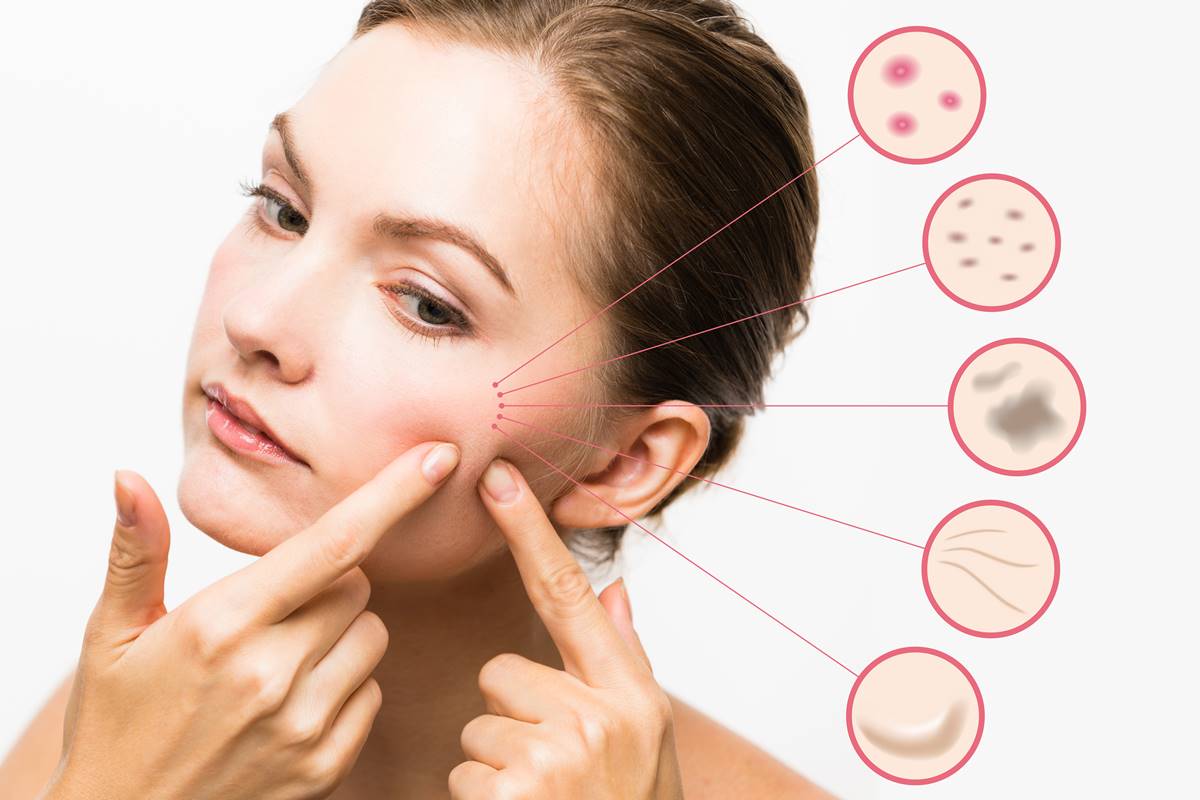What is acne?
When the pores on your skin get blocked by dead skin cells and oil, this creates a perfect environment for the growth of bacteria. The moment this transpires, you might develop a pimple on your face. If the blockage gets repeated, you may develop acne. Based on various scientific research, acne has been confirmed to be the most common skin ailment. Even though it is not a dangerous condition, it can be painful and emotionally debilitating when severe.
Acne is a chronic inflammatory disease of the skin that is known to cause spots, pimples, and inflammation.
The presence of acne on your face can affect your confidence and can even end up causing permanent scarring.
Who develops acne?
Individuals of all ages can develop acne, but it is most common in adolescents, with males being particularly susceptible during the teenage years. However, there is no age limit for acne, and it can persist for a lifetime.
Symptoms of acne
Acne can occur anywhere on the body but is most likely to appear on the face, neck, and shoulders. The moment you have acne, you will discover some blemishes that are either white or black.
Blackheads give a black look because of the presence of oxygen, and remember, they appear on an open skin surface. On the contrary, whiteheads are situated under the surface of your skin.
Whiteheads and blackheads have been confirmed to be the most common lesions associated with acne, but this does not mean they are the only ones. Other types like nodules and cysts can cause problems too.
Causes of acne
Just as mentioned above, acne transpires when various skin pores get blocked with dead cells or bacteria. The individual pore of the skin makes the opening for a hair follicle, which is made up of hair and an oil gland. When the oil gland is activated, it releases sebum, which moves up to the skin via the pore keeping the skin moisturized and soft. Acne transpires when the following happens.
- When oil production becomes too much
- When the pores are blocked by either oil or dead skin
- When various microorganisms build up in your pores
These complications are what lead to the growth of pimples.
Factors precipitating the development of acne
Several factors are known to trigger acne, including;
- Hormones
- Genetic factors
- Some drugs containing androgen or lithium
- Stress
- Greasy cosmetics
- Menstruation
Hormonal factors
Acne is mostly caused by an upsurge in the level of androgen hormone. This transpires during adolescence, and in women, androgen is converted to estrogen, which is a female hormone.
An increase in androgen levels promotes the growth of oil glands located under the skin. With an enlarged sebaceous gland, lots of sebum is produced, causing disruption to the cellular walls and causing the growth of bacteria, which later block the pore.
Can acne be caused by diet?
Several scientific studies have confirmed that there is an association between acne and diet. The development of acne has been linked to the consumption of food with a higher glycemic index because this food can elevate the hormones that cause an upsurge in the activity of the oil glands.
Food with a glycemic index of more than 69, for instance white bread, is categorized under food with a higher glycemic index. More than a few studies have revealed the benefits of low-glycemic food in acne treatment. The explanations behind these benefits are believed to be related to their effects on insulin.
Insulin stimulates the production of androgens and other growth hormones. Which later incites scaling of the follicle and oil production. Both excess sebum production and keratinization of the follicle cause acne.
Which food should be avoided while dealing with acne?
1. Food with a high level of sugar
Food with a high level of sugar has a higher glycemic index. The moment you consume food such as white bread, your blood sugar level will automatically upsurge. This raises the quantity of insulin produced by the body.
Some food with a low glycemic index, like cow’s-milk, contain androgens, progesterone, and estrogen known to aggravate keratinization of follicle and production of sebum. This food has additional amino acids such as leucine that can produce insulin when amalgamated with carbohydrates. Milk also has some protein and iodine that can stimulate comedones.
Chocolate contains caffeine and serotonin, which play a significant role in insulin production.
2. Food with a high level of fats
As fatty acids are a component of sebum, food rich in fats (especially monounsaturated fatty acids) have been confirmed to increase the production of sebum. On the other hand, essential fatty acids such as linoleic acid can unclog the hair follicles and lessen sebum production.
3. Suitable food for acne
A great number of individuals with acne have recounted perfection in their skin by following a low-glycemic index diet and increase their consumption of whole grains, fish, garlic, and olive oil.
Acne treatment
When changing diet does not alleviate acne, you can seek medical help.
The aims of acne treatment include;
- To heal lesions.
- To prevent the formation of a new lesion.
- To inhibit scarring.
There are several drugs you can use to treat acne. Just consult your doctor for the most appropriate one.










Comments are closed.